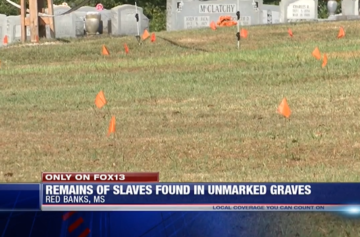The year, 1835. The setting, the Florida territory on the eve of the Second Seminole War. Tensions between the region’s native inhabitants and an encroaching American government have escalated upon President Andrew Jackson’s order to push the Seminoles west for incorporation with Creek natives. Given the territory’s history as the largest haven for Africans escaping enslavement in the South, a sizable representation of maroons or “Black Seminoles” — Africans both formerly enslaved and free — live among and are allied with the natives. Unwilling to give up their land or submit to enslavement and though substantially outnumbered and outgunned, the alliance wages war against the United States Army.
From this turmoil emerges John Horse, a brave and savvy Black Seminole of both African and native lineage who fights alongside alliance leader Osceola before rising to leadership himself. In the process, he is captured by army soldiers but makes a daring prison escape to rejoin and inspire the weary alliance to fight on. From there, Horse, along with his elite cadre of Black Seminole warriors, fights fiercely for three years to a standstill with the U.S. Army, prompting the latter to arrange a Black Seminole armistice in 1838. Not only does this peace treaty represent the United States’ only non-victory until the Vietnam War over a century later but, given the resulting freedom for 400 formerly enslaved Black survivors, it also qualifies as the largest and most successful rebellion of enslaved Africans in American history.
So, why don’t we ever hear anything about it?
“America overlooked this rebellion because it could,” says J.B. Bird, Director of Media Relations and Digital Newsroom at The University of Texas at Austin. A longtime researcher on the Black Seminoles, he is the architect of the definitive website on Horse and the rebellion.
Bird explains the events happened at “a time in American history where newspapers and dominant public discourse were controlled mainly by white men” who, in the southern portion of the country, “did not talk about these kinds of things. If you read the newspapers of the times, you’ll see there are small references to insurrections and rebellions often written in a cryptic or deliberately euphemistic way. It wasn’t necessarily a conspiracy since that’s just what you did if you were a white man at the time. You didn’t talk about it.”
The implications of such historical whitewashing-by-silence go far beyond any one event and speak to how, within an imposed Eurocentric construct, the American mainstream is often left in the dark. “If the country could have overlooked Nat Turner’s rebellion, it would have as well,” Bird says. He notes Turner’s infamy was the result of a particular set of timely circumstances, including Virginia’s high-profile status as a state, its ongoing debate over slavery and its prime location in the country, where you couldn’t “pretend it didn’t happen.” Turner’s 1831 rebellion occurred at “a time when the antislavery movement was heating up” and was “so violent and so blatantly about race relations, you couldn’t say anything else caused it.” Yet, this was not the case for the Black Seminoles rebellion since it was less singular in theme and could more easily be subsumed by the ongoing Indian Wars of the 19th century.
That said, the historic plight of the Black Seminoles clearly deserves a focus of its own. As far back as the late 1600s, enslaved Africans began escaping plantations in the American South and making their way to Spanish Florida where they were offered freedom in exchange for defending the Spanish crown. A century later, upon the advent of the American Revolution, the British offered a similar deal and the maroons aligned with the land-defending natives to fight against the Americans. After the British defeat, a substantial portion of the maroons were relocated to the Caribbean, Canada and England, while others remained in the territory, a source of concern for President George Washington, who wanted to recover those who’d escaped. Washington’s 1790 Treaty of New York involved plans to recapture these maroons from Florida, no small feat, given their growing alliance and blending with the natives.
“When the whites started making incursions into Florida and letting the Seminoles know they wanted their land, the Blacks told the natives, ‘We will side with you since we want to stay here and live in freedom,’” Black Seminole descendant and historical researcher John Griffin says. The maroons well knew the Seminoles “did not want to leave their home.”
Continued American aggression ultimately provoked two wars with the Seminoles, the latter ending with the 1838 armistice where Horse and his warriors agree to cease fighting and relocate west to Indian Territory in Oklahoma in exchange for their federally recognized emancipation.
Still, the story of Horse and the Black Seminoles does not end there. The 1840s in Oklahoma proved difficult as there were intentions to re-enslave the maroons among Southern officials, plantation owners and a segment of slaveholding natives. As a result, Horse, who now served as a U.S. Army Scout to help negotiate the surrender of Florida natives, traveled to Washington with the support of new ally and future president General Zachary Taylor to petition President James Polk on behalf of the Black Seminoles. However, in 1849, after more than a decade of shifting local and national politics and the growing threat of enslavement, Horse led a mass migration of Black and native followers to settle in Nacimiento in Mexico, a country where slavery was illegal. Descendants of these Black Seminoles settlers still live in Nacimiento to this day.
Though history has not been kind to the Black Seminoles, obscuring their dramatic plight under the general umbrella of “American Indian Wars,” Bird rebuffs any attempts to minimize their pivotal role in the Second Seminole War and its aftermath. “In the military intelligence files of the day, the officers were very clear that the Black Seminoles were the main agitators and the fiercest fighters. There are people, to this day, who don’t like to say that for various reasons, but this is what is written in a clear-eyed and realistic appraisal from the officers fighting them.”
What’s fascinating, Bird continues, is in the historical files, “You can see these instances where it had to be talked about. The Florida legislature spoke very openly about the ‘Black rebellion’ and even passed a law prescribing the death penalty for rebellious slaves called ‘The Act Respecting the Hostile Negroes and Mulattos of the Seminole Nation.’ It very clearly said the maroons were leading the rebellion.” Consistently, the brave efforts of the Black Seminoles would subsequently influence arguments against slavery in the U.S. Congress and help turn the tide in the ongoing quest for abolition.
Some believe such an important and extraordinary account in this country’s past, one containing the largest and most successful rebellion of enslaved Africans in the country’s history, should no longer be relegated to the sidelines of our collective American narrative.
“We’ve all got to start somewhere,” Griffin says. “And when you get to a later point down the road, you realize what you are really capable of by looking back and seeing how far you’ve come.”
But, Griffin continues, if “someone has eradicated those points behind you, you are left believing you are not capable.
“That’s what slavery and American history has tried to do to us.”


